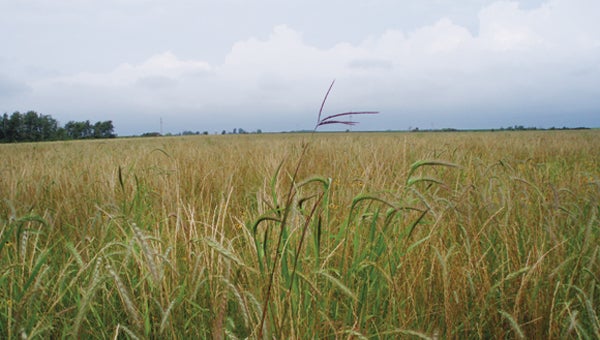Dry, warm weather may help pheasants
Published 9:23 am Monday, January 9, 2012

While warm, dry weather may help the pheasant hatch this spring, many acres of CRP are set to expire across the state. -- Photo provided
With the upland bird hunting season complete and warm weather covering the region, pheasants are finally catching a break.
“Many of us made that comment that this is a real break for the pheasants,” said Jeanine Vorland, Department of Natural Resources area wildlife manager.
More good news is that National Weather Service meteorologists say conditions may remain dry throughout the winter and spring, judging by patterns over the Pacific Ocean. While that is too soon to determine, a dry, warm nesting season may foster a successful hatch — as long as it’s not too dry. Pheasants rely on marshy areas, but when those areas get too wet and cold, like last year, poor hatches are the result, Vorland said.
She added that habitat is the most critical factor for a successful pheasant population; however, the loss of land in the Conservation Reserve Program throughout the state may only hinder a successful spring hatch come fall.
According to the DNR, contracts for 550,000 acres of CRP lands are scheduled to expire in the next three years. If not re-enrolled, this would reduce CRP acres in Minnesota by 36 percent.
To help offset continued habitat loss, the DNR has accelerated acquisition of Wildlife Management Areas in the farmland region of Minnesota. DNR also supports habitat conservation on private lands by working with a variety of partners in the Farm Bill Assistance Partnership and Working Lands Initiative.
“The farm bill is just super-critical for wildlife in this part of the state,” Vorland said, and added that DNR scientists will testify to lawmakers how the land acquisition and new, creative conservation programs are important for wildlife sustainability.
Locally, Pheasants Forever is trying to do its part, too. The group is still trying to add more acreage for wildlife management areas near Austin. One project includes the acquisition of 160 acres outside of town for wildlife refuge.
Mower County may be one, small niche that holds up for pheasants for several more years to come, despite the already-sparse bird population. According to the Mower County Farm Service Agency, Mower County farmers tend to renew expiring CRP at a 75 to 80 percent rate. The county currently holds about 1,000 CRP contracts totaling 6,500 acres. Though roughly 900 acres are set to expire, a high renewal rate and increased local interest in CRP may keep the area stable.
“I’d say for Mower County, we’re holding our own,” said Michelle Janssen, program technician with MCFSA. “And in fact, we have a lot of guys who want to get into the program.”
That’s because Mower County has a lot of critical areas where farmland is adjacent to waterways. Those areas can often qualify as CRP buffer strips.
CRP currently pays $80 to $300 per acre per year — depending on soil type — with the average contract paying about $175 locally, Janssen said.
Still, surrounding counties such as Freeborn and Dodge will likely lose more acres this fall, Vorland suspects. Many CRP 15-year contracts expire soon. She’s already seen many CRP acres dwindle in the last years because of high farmland rental rates and grain prices. Vorland encourages homeowners to at least plant conifer trees and fruit-bearing shrubs for habitat.
Despite the uncertainty, the hunting season and regulations may not change, Vorland said. Studies have shown that hunter harvests have little affect on pheasant populations.
It all comes down to habitat.


